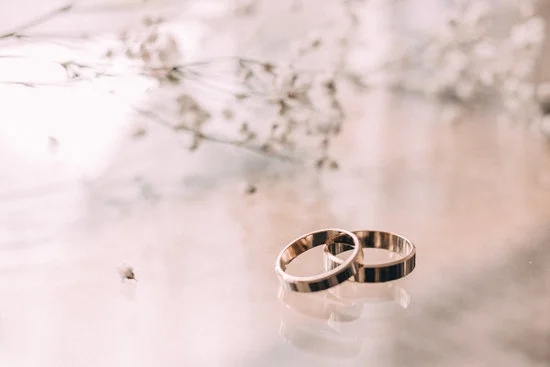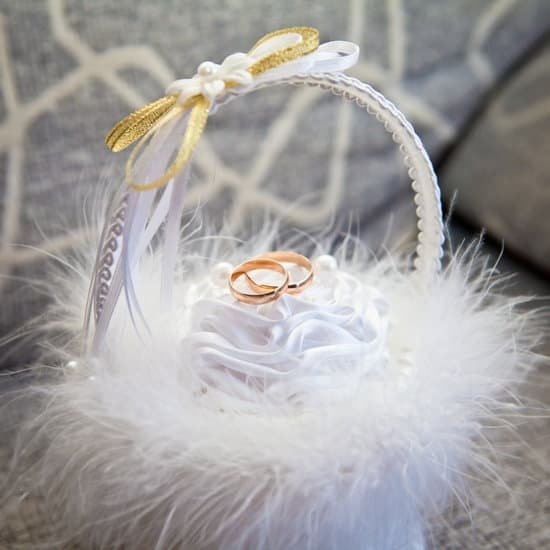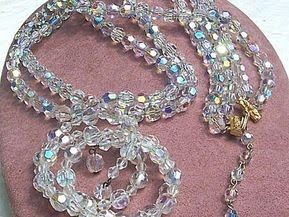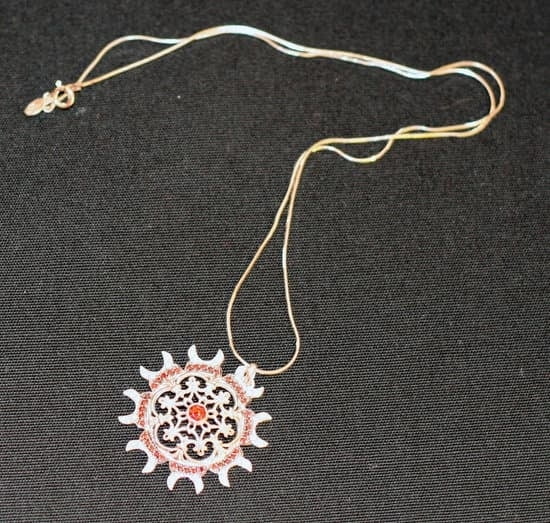Fine silver jewelry is known for its stunning appearance and lustrous shine, but it’s also notorious for its softness and susceptibility to damage. In this article, we will delve into the properties of fine silver and why it tends to be so soft, as well as explore the importance of hardening it. If you’ve ever wondered how to harden fine silver jewelry to ensure its durability and longevity, you’re in the right place.
Understanding the nature of fine silver is crucial in comprehending why it is prone to softness. We will discuss the molecular structure of fine silver and how it differs from alloys like sterling silver. Additionally, we’ll explore the significance of hardening fine silver jewelry, especially when it comes to wearable items that are subjected to everyday wear and tear.
Furthermore, we’ll provide detailed insights into various methods of hardening fine silver jewelry. Whether through work hardening techniques using basic tools such as hammers and mandrels or utilizing heat hardening processes with a torch or kiln, this article will cover everything you need to know about reinforcing your precious pieces.
And if that’s not enough, we’ll also delve into the concept of alloying fine silver with metals like copper or zinc for added strength. Stay tuned for invaluable tips on maintaining and caring for your hardened fine silver jewelry to ensure its pristine appearance over time.
The Importance of Hardening
Fine silver is a popular choice for jewelry making due to its malleability and ability to take on intricate designs. However, one downside of fine silver is its inherent softness, making it prone to bending and scratching. This is where the importance of hardening fine silver jewelry comes into play. By hardening fine silver, you can increase its durability and longevity, ensuring that your beautiful creations stand the test of time.
There are several methods of hardening fine silver jewelry, each offering unique benefits and results. One common technique is work hardening, which involves manipulating the metal to increase its hardness. Another method is heat hardening, which uses high temperatures to strengthen the metal. Additionally, alloying fine silver with other metals like copper or zinc can also enhance its hardness.
When it comes to work hardening fine silver jewelry, there are a few key steps to follow. Here’s a simple guide on how to work harden your fine silver pieces using basic tools:
- Begin by gently hammering the jewelry piece using a rubber or nylon mallet.
- Use a mandrel to shape and further work-harden the metal.
- Repeat the hammering and shaping process until the desired level of hardness is achieved.
For heat hardening, you will need a torch or kiln to carefully heat the piece to a specific temperature and then allowing it to cool slowly. This process helps rearrange the metal molecules, resulting in increased hardness.
By understanding how to harden fine silver jewelry using these methods, you can ensure that your creations not only look stunning but also withstand everyday wear and tear for years to come.
Methods of Hardening
Fine silver jewelry is known for its lustrous shine and beautiful appearance, but one of its drawbacks is its softness. This softness can make fine silver jewelry susceptible to scratches, dents, and other forms of damage with regular wear. To address this issue, it is essential to understand the methods of hardening fine silver jewelry in order to increase its durability and longevity.
There are several techniques that can be used to harden fine silver jewelry, including work hardening, heat hardening, and alloying. Work hardening involves manipulating the metal through processes such as hammering or bending to increase its hardness. Heat hardening, on the other hand, uses heat from a torch or kiln to strengthen the metal. Additionally, alloying fine silver with metals like copper or zinc can also enhance its hardness.
For jewelry makers and enthusiasts looking to learn how to harden their fine silver creations, it’s important to consider these different methods and determine which one best suits their needs. Each technique has its own set of benefits and considerations, so understanding the nuances of each approach is crucial for achieving the desired results.
Whether it’s through work hardening, heat hardening, or alloying, properly hardened fine silver jewelry can maintain its beauty while standing up to the rigors of everyday wear.
In the following sections, we will delve deeper into each method of hardening fine silver jewelry and provide step-by-step instructions on how to effectively apply these techniques. By gaining a comprehensive understanding of these methods, jewelry makers can ensure that their fine silver pieces are not only stunning in appearance but also built to withstand the test of time.
Work Hardening Techniques
Fine silver jewelry is beloved for its luster and shine, but its inherent softness can make it prone to bending and scratching. Work hardening is an effective technique that can be used to increase the hardness of fine silver jewelry, making it more durable and long-lasting.
What Is Work Hardening?
Work hardening, also known as cold working, is the process of strengthening metal by deforming it through plastic deformation. This method changes the internal structure of the metal, increasing its hardness and strength.
Step-by-Step Instructions
- Begin by placing the fine silver jewelry piece on a hard, flat surface.
- Use a polished hammer or mallet to gently strike the surface of the jewelry piece. Focus on areas that are more susceptible to wear and tear, such as clasps, links, and edges.
- Rotate the jewelry piece and continue hammering until you achieve the desired level of hardness.
- For intricate designs or tight spaces, use a mandrel or dapping block to support the piece while hammering.
- Periodically check the hardness of the jewelry by attempting to bend or scratch it with moderate force.
By following these simple steps and using basic tools like hammers and mandrels, you can effectively work harden your fine silver jewelry, ensuring its durability and longevity.
It is important to note that while work hardening can increase the hardness of fine silver jewelry, excessive force can also lead to deformation or damage. Exercise caution and apply gentle pressure when using this technique. With proper care and maintenance, your hardened fine silver jewelry will retain its beauty for years to come.
Heat Hardening Process
Fine silver jewelry is prized for its beautiful luster and shine, but it is also known for being soft and prone to damage. To ensure the durability and longevity of fine silver jewelry, it is essential to harden it using various techniques. Heat hardening is one effective method that can significantly increase the hardness of fine silver, making it more resistant to wear and tear.
Understanding Heat Hardening
Heat hardening, also known as annealing, involves heating the fine silver jewelry to a specific temperature and then allowing it to cool slowly. This process rearranges the molecular structure of the metal, making it stronger and more resistant to bending or denting. It is important to note that heat hardening should only be done with pure fine silver or sterling silver, as other alloys may react differently to the heat treatment.
Process of Heat Hardening
To heat harden fine silver jewelry, you will need a torch or kiln capable of reaching temperatures between 600°C and 700°C. First, clean the jewelry piece thoroughly to remove any dirt or oils that may interfere with the heating process. Next, use a small butane torch or a jeweler’s kiln to heat the piece evenly until it reaches the desired temperature. Once heated, allow the piece to cool naturally in order to achieve optimum hardness.
Cautions and Considerations
When heat hardening fine silver jewelry, it is important to exercise caution and patience. Overheating can lead to discoloration or warping of the metal, so precise control over the temperature is crucial. Additionally, always work in a well-ventilated area when using a torch or kiln to avoid inhaling hazardous fumes. Proper safety equipment such as goggles and gloves should also be worn during this process.
Overall, heat hardening is an effective way to increase the hardness of fine silver jewelry without compromising its beauty. With careful attention to detail and adherence to safety measures, jewelry makers can produce stunning pieces that are both durable and long-lasting.
Alloying for Strength
Fine silver is a popular choice for jewelry making due to its lustrous appearance and malleability. However, its softness can also make it susceptible to dents, scratches, and deformities with regular wear. To overcome this challenge, many artisans choose to alloy fine silver with other metals like copper or zinc to increase its hardness and durability.
Alloying fine silver involves mixing it with other metals to create a new material that retains the desirable qualities of fine silver while enhancing its strength. Copper is one of the most common metals used for alloying with fine silver, as it not only increases the hardness of the final product but also adds a touch of warmth to its color.
On the other hand, zinc can be added to create sterling silver, a popular alloy that combines the beauty of fine silver with increased durability.
When alloying fine silver with copper or zinc, careful consideration must be given to the percentage of each metal used in the process. This ensures that the resulting alloy possesses the desired level of hardness and other physical properties. Additionally, proper techniques for melting, casting, and shaping the alloyed metal are crucial to achieving consistent results in jewelry making.
| Alloy Metal | Effect on Hardness |
|---|---|
| Copper | Increases hardness and adds warmth to color |
| Zinc | Creates sterling silver; enhances durability |
Finishing Touches
After hardening your fine silver jewelry, it’s essential to give it the finishing touches to maintain its shine and luster. One of the best ways to do this is through polishing. To polish hardened fine silver jewelry, you can use a polishing cloth specifically designed for silver.
Gently rub the cloth on the surface of the jewelry in a back-and-forth motion to remove any tarnish and restore its shine. This simple step can make a significant difference in the appearance of your jewelry.
In addition to polishing, another way to add those final touches to your hardened fine silver jewelry is by giving it a professional finish. This can be achieved through techniques such as plating with rhodium or gold, or using a metal lacquer. These finishes not only enhance the appearance of the jewelry but also provide an extra layer of protection against tarnishing and scratching.
When it comes to maintaining the shine and luster of hardened fine silver jewelry, proper storage is also crucial. Store your jewelry pieces in airtight containers or bags to minimize exposure to air and moisture, which can cause tarnishing.
You can also include anti-tarnish strips or silica gel packets in the storage containers to absorb any excess moisture that may be present. By following these simple yet effective tips for polishing, finishing, and storing your hardened fine silver jewelry, you can ensure that it continues to look stunning for years to come.
| Polishing Techniques | Finishing Methods | Storage Tips |
|---|---|---|
| Use a specific silver polishing cloth | Consider plating with rhodium or gold | Store in airtight containers or bags |
| Gently rub in back-and-forth motion | Use metal lacquer for added protection | Include anti-tarnish strips or silica gel packets |
Maintenance and Care
In conclusion, understanding the properties of fine silver and why it is prone to softness is crucial for anyone working with this metal. The importance of hardening fine silver jewelry cannot be overstated, as it directly impacts its durability and longevity. Fortunately, there are several methods available to achieve this, including work hardening, heat hardening, and alloying.
Work hardening techniques involve using tools like hammers and mandrels to carefully shape and strengthen the metal. This process can be done by following a few simple steps, and it’s essential for anyone looking to create durable jewelry pieces.
Heat hardening is another effective method that involves using a torch or kiln to heat the silver to a specific temperature, resulting in increased hardness. Additionally, alloying fine silver with metals like copper or zinc can also significantly increase its strength.
As important as hardening fine silver jewelry is, proper maintenance and care are equally essential for ensuring its longevity and appearance. Polishing and finishing hardened fine silver jewelry will help maintain its shine and luster. In addition to this, knowing how to care for and store your jewelry properly will also make a significant difference in preserving its quality over time.
Overall, while working with fine silver may require some extra effort when it comes to hardening and maintenance, the results are well worth it in the long run. With the techniques mentioned above, as well as consistent care practices, jewelry makers can ensure that their creations remain beautiful and durable for years to come.
Frequently Asked Questions
How Do You Harden Fine Silver?
Fine silver can be hardened by a process called work hardening. This involves bending, shaping, or hammering the silver to compress its atoms and make it more rigid. You can also use a process called annealing to soften the silver before work hardening it again.
How Can I Harden Silver at Home?
If you want to harden silver at home, you can do so by using simple tools like hammers, mallets, or metal mandrels to shape or manipulate the silver. By using these tools to compress or bend the silver, you can increase its hardness. Just be mindful of the type of silver you are working with and take appropriate safety measures.
How Do You Make Sterling Silver Harder?
Sterling silver can be made harder through a similar process of work hardening. By bending, shaping, or compressing the sterling silver, you can increase its rigidity and strength.
Heat treatment processes like annealing and quenching can also help alter the structure of the metal to make it harder. Working with a professional jeweler or silversmith may be necessary for more complex projects.

Welcome to my jewelry blog! My name is Sarah and I am the owner of this blog.
I love making jewelry and sharing my creations with others.
So whether you’re someone who loves wearing jewelry yourself or simply enjoys learning about it, be sure to check out my blog for insightful posts on everything related to this exciting topic!





